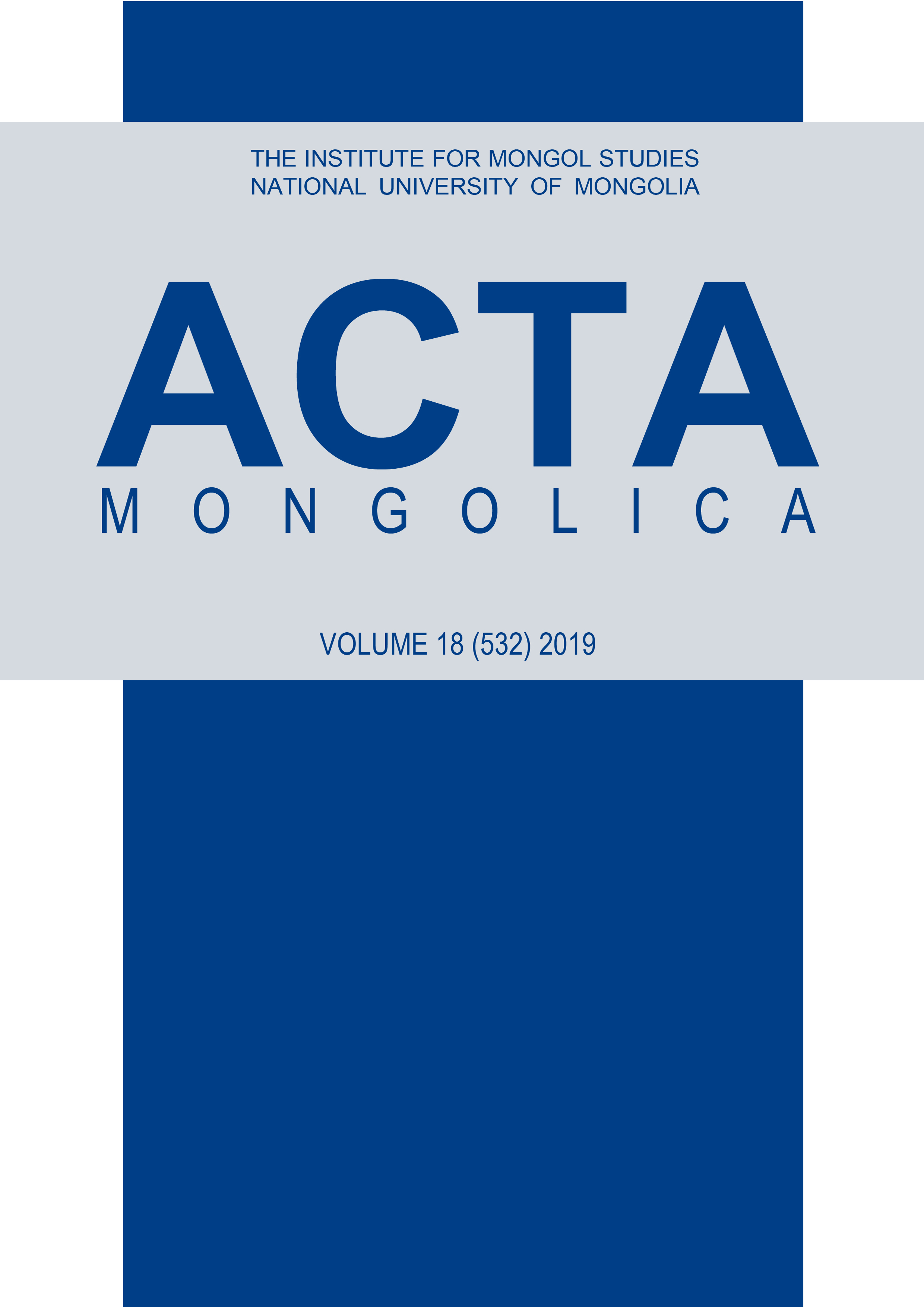Comparison of Optative Endings in Manchu and Mongolian in the 18th century Based on Cheonghak saseo (淸學四書) and Monghak samseo (蒙學三書)
Main Article Content
Abstract
The optative endings in Manchu and Mongolian have comparatively studied in accordance with the textbooks Cheonghak saseo (淸學四書) and Monghak samseo (蒙學 三書) of the 18th century which are kept in Korea and analyzed the use of optative endings in quotations and negative statements. The two languages were similar in the quotation verbslike ‘se-’ and ‘ge-/keme-’ which were made to simply quote and express the intention of the subject. Furthermore, the negation words ‘ume’ and ‘büü, bitegei’ were also similar in negative sentences. However, this study was only limited to the use of optative endings; further comparative studies in the use of tenses of Manchu and Mongolian in the 18th century need to be carried out.
Article Details

This work is licensed under a Creative Commons Attribution-ShareAlike 4.0 International License.
References
Mongo nogeoldae (蒙語乞大, 1st edition 1790) Sogang University Institute of Humanities and Sciences, Korean scholarly materials, 3rd edition (edited in 1984).
Mongoyuhe (蒙語解, 1st edition 1790) Seoul National University, Classics publishing association, photogarphic editions (edited in 1971)
Cheophae mongo (捷解蒙語, 1st 1790) Hongmungak, photogarphic editions (edited in 1988)
Cheong-eo nogeoldae (淸語乞大, 1st 1790) Sogang University Institute of Humanities and Sciences, Korean scholarly materials, 3rd edition (edited in, 1983)
Samyeok chonghae (三譯總解, 1774), P’alsea (八歲兒, 1777), Soaron (小兒論, 1777) Hongmungak, (edited in 1995)
김방한 (1999) 몽골어연구, 서울대학교 출판부.
김주원 (2008) Materials of Spoken Manchu, SNU PRESS.
니콜라스 뽀뻬 (1992) 몽골문어문법, 민음사.
박은용 (1973) 만주어문어연구(二), 형설출판사.
백응진 (2012) A Colloquial Manchu Grammar, Hallym University Press.
연규동 (2012) 만주어의 원망법, <한국언어학회> 62권 62호, pp.3-22.
이기문 (1964) <蒙語老乞大> 硏究, 진단학회 <진단학보>, 25권 25호, pp.367-427.
이성규 (1999) 蒙古語 文法 硏究, 성균관대학교 박사학위논문.
조규태 (1981) ‘八歲兒’ 滿洲語 文語 硏究, 국어교육학회 <국어교육연구> 13권, pp.1-27.
주수현 (2018) 몽골어, 만주어의 의문첨사 비교 -몽어노걸대, 청어노걸대를 중심으로, 이중언어학회, 70권, pp.277-309.
최기호 (1994) 몽어노걸대 연구, 상명여자대학교 출판부.
최기호 (1985)『몽어노걸대』의 형태론적 연구, 연세대학교 대학원 박사학위논문.
최동권 (1999) 한국어·몽골어·만주어 의도구문 비교연구, 알타이학회 <알타이학보> 9권 9호, pp.249-264.
최동권 (2006) 국어·몽골어·만주어 인용문 비교연구, 알타이학회 <알타이학보> 16권 16호, pp.177-198.
최동권, T.Otgontuul (2009) 역주 몽어노걸대, 피오디월드.
최동권, 강성춘c T.Otgontuul (2008), 만문삼국지,한국학술정보, 최동권 (2012) 역주 청어노걸대신석, 박문사.
홍종선 (1998) 근대국어 문법의 이해, 박이정.

